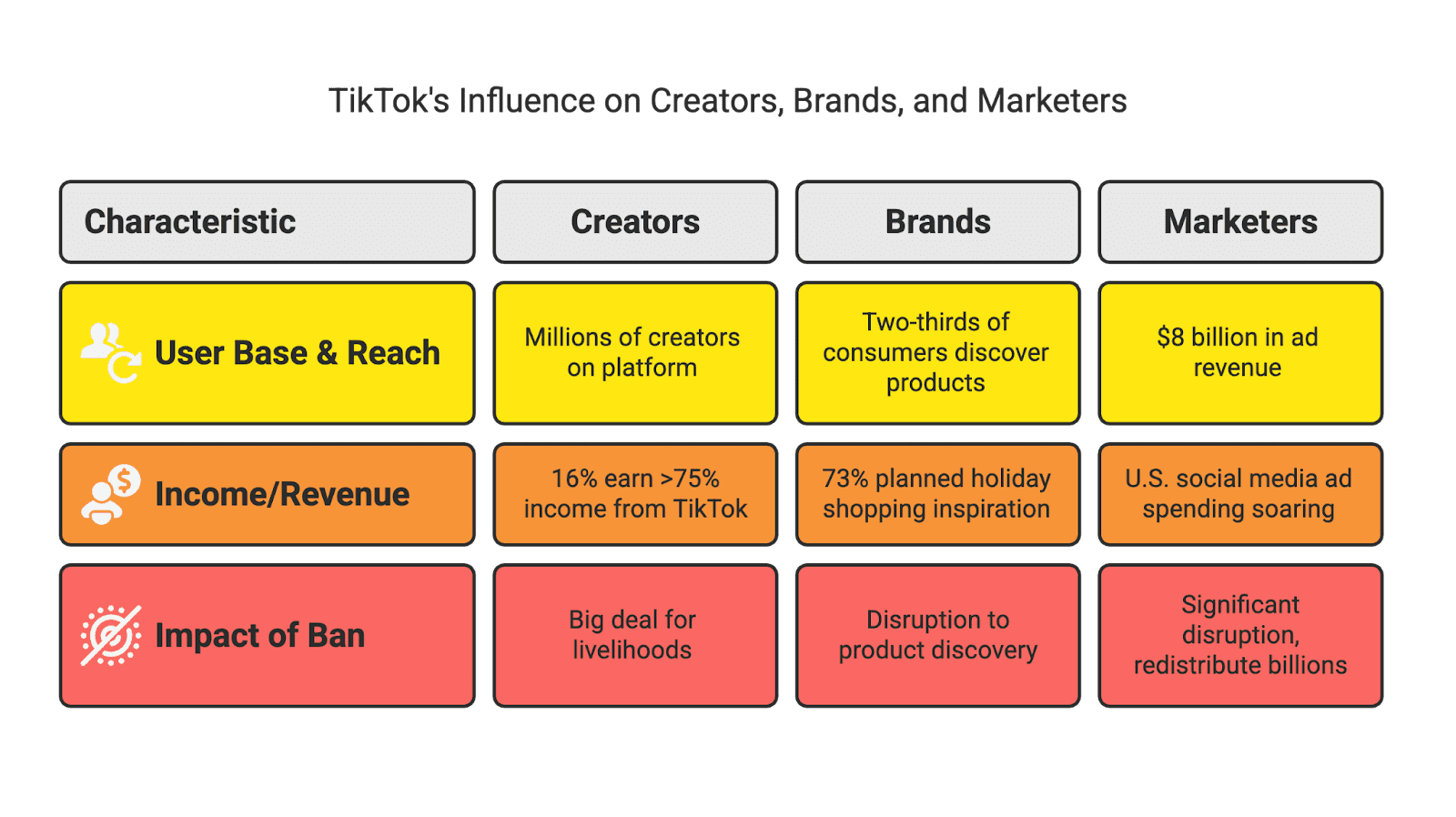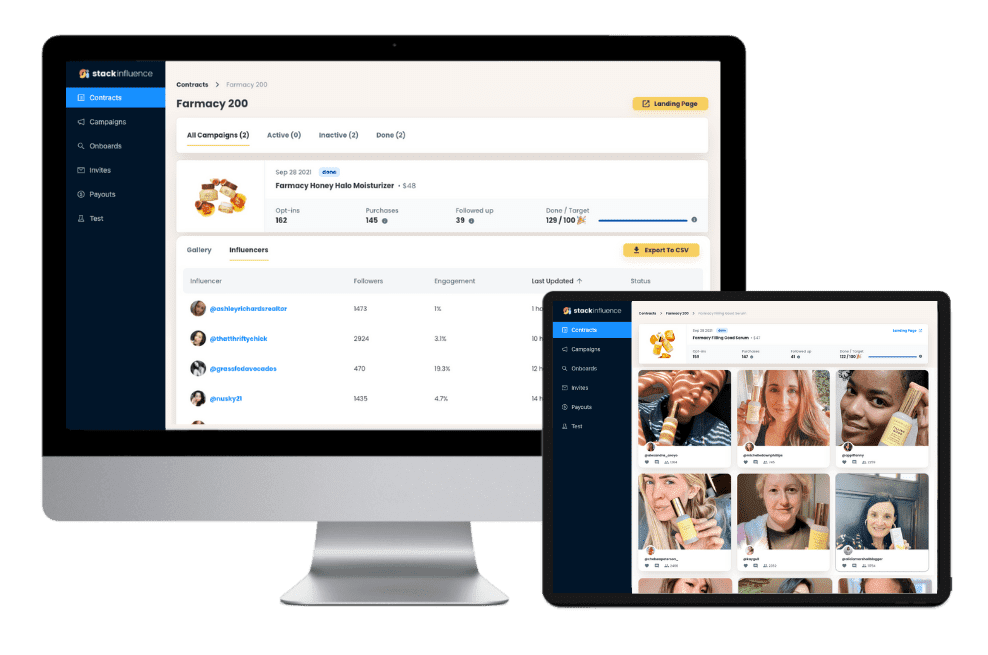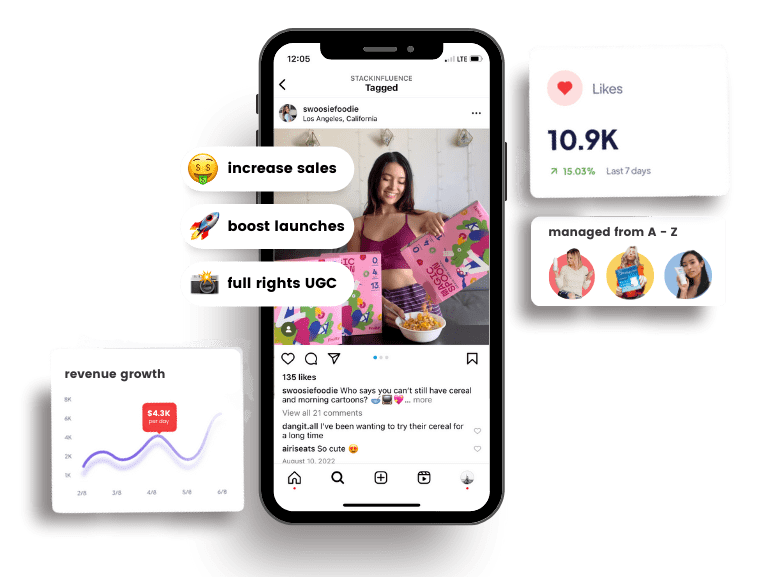What if TikTok Gets Banned? Influencer Marketing’s Plan B
4th
July, 2025
Influencer Marketing
Amazon Marketplace
Artificial Intelligence
TikTok Tips
TikTok has become a powerhouse in social media and influencer marketing – so much so that talk of a potential ban sends shockwaves through the creator community. What would happen if TikTok actually went dark? And more importantly, what’s Plan B for influencers and marketers? In this blog post, we’ll explore how a TikTok ban could impact creators, brands, e-commerce sellers and more, and outline strategies to stay on top of your influencer game even if TikTok disappears. (Spoiler: savvy influencers and marketers are already preparing backup plans.)
TikTok’s Huge Influence on Creators and Brands

It’s hard to overstate TikTok’s impact on the creator economy. The platform boasts over 170 million U.S. users and has given rise to millions of content creators. TikTok’s unique algorithm and viral trends have turned everyday people into internet stars, and it’s a central hub for influencer marketing. Many micro-influencers and content creators rely on TikTok not just for views but for income – in one recent survey, 16% of influencers said more than 75% of their income comes from TikTok, and one-third earn 25–50% of their income there. In other words, a ban would be a big deal for those creators’ livelihoods.
TikTok isn’t just dancing teens; it’s also a rising force in social commerce. Over two-thirds of consumers discover products on TikTok that they later purchase elsewhere, making it a powerful product discovery engine for brands. By 2024, 73% of consumers planned to use TikTok for holiday shopping inspiration (and 59% intended to buy directly via TikTok Shop), highlighting how deeply TikTok is woven into e-commerce trends. 81% of retailers are on TikTok to sell directly to consumers – and many have experienced the chaos of “TikTok made me buy it” virality (nearly 70% of retailers surveyed struggled with stockouts or supply delays thanks to TikTok-driven demand surges). Simply put, TikTok’s influence on shopping and user-generated content (UGC) marketing is huge.
For marketers, TikTok has been a gold rush. U.S. social media ad spending is soaring (projected to top $82 billion in 2025), and TikTok has claimed an $8 billion chunk of that. If the platform suddenly went offline, brands would be scrambling. As one report noted, a ban “would cause significant disruption for marketers,” forcing them to redistribute billions of ad dollars across other channels. In short, everyone from micro-influencers to Amazon sellers could feel the ripple effects of a TikTok ban.

Unlock the Power of Micro Influencers and Elevate your Brand Today!

What a TikTok Ban Would Mean (in Real Terms)
A TikTok ban – whether through government regulation or app store removal – means creators lose access to the platform and audience they’ve built there. We’ve already seen a preview of this in markets like India, which banned TikTok in 2020. At the time, TikTok had over 200 million Indian users and was a primary platform for creators. When it vanished, local copycat apps sprang up, but ultimately Instagram and YouTube emerged as the big winners. Millions of Indian TikTokers flocked to Instagram Reels and YouTube Shorts, but not without pain: many found it hard to recreate their TikTok success elsewhere. For example, one popular TikTok choreographer with 1.5 million TikTok followers managed to bring only ~94,000 of them to Instagram in the years after the ban. Building an audience on other platforms can take years, and not every TikTok star will automatically thrive on Instagram’s more curated, personality-driven style.
For influencers and content creators, a ban means losing a massive audience and content library overnight. It’s not just dance challenges – think of all the product review videos, educational clips, comedic skits, etc., that might disappear. Many creators (especially micro-influencers who poured their energy into TikTok) would need to pivot quickly to avoid losing relevance and income. In fact, 84% of influencers say they’re worried about a potential TikTok ban (52% are very concerned), and with good reason: their monetization and brand deals are at stake. The good news is that most aren’t waiting around – 67% of influencers already have contingency plans in place for a TikTok ban. This shows that savvy creators are thinking ahead and diversifying (as we’ll discuss below).
Brands and marketers would also feel the crunch. Many brands have invested heavily in TikTok advertising and TikTok influencer partnerships to reach Gen Z and Millennial shoppers. Two-thirds of retailers in a late-2024 study believed a TikTok ban or sale would impact their business and conversion rates. TikTok’s secret sauce is the way its For You page can make unknown products go viral overnight – losing that channel means losing a bit of marketing magic. “Retailers risk losing a powerful product discovery platform if TikTok is shut down,” said one industry CEO, noting the clock is ticking for retailers to develop backup plans. Yet surprisingly, only 28% of retailers in that study had a specific contingency plan.
In summary, a TikTok ban would be a shock to the system: creators would have to scramble to relocate their communities, and marketers would need to rapidly reallocate budgets and strategies. The key to weathering this storm is diversification and flexibility – enter Plan B.
Plan B = Diversify: Where Influencers & Marketers Will Go Next
If TikTok goes dark, influencers and brands won’t be quitting social media – they’ll move their efforts elsewhere. So what does “Plan B” look like? In a word: Meta. Recent surveys suggest that the first choice for displaced TikTokers is Facebook and Instagram. In fact, one 2024 survey of creators with 10k+ followers found that if TikTok were banned, 40% of influencers would shift their focus to Facebook, and 33% to Instagram. (Surprising, right? Facebook edged out Instagram by a bit – likely due to its sheer scale and the integration of Reels across both Facebook and Instagram.)
Figure: Many influencers plan to pivot to Meta’s platforms if TikTok is banned, with 40% choosing Facebook and 33% Instagram. This chart illustrates survey findings by First Insight, showing where creators would focus if TikTok disappeared. (The remaining 27% of creators surveyed favored other platforms like YouTube, Snapchat, or “new apps” as their Plan B.)
Instagram Reels is the most natural refuge for TikTok-style short video content. Reels was created to mimic TikTok’s format, and it’s already tremendously popular. After India’s TikTok ban, Instagram saw an explosion of content – about 6 million Reels were posted per day in India within a year of the ban (far outpacing content on local clone apps). For influencers, Instagram offers the allure of an established follower network and robust monetization tools (shopping tags, brand partnership labels, etc.), though its algorithm tends to reward a more polished aesthetic and consistent personal branding than TikTok’s. Creators who can bring their TikTok audience to Instagram will want to lean into Reels, while also using Instagram Stories and Posts to deepen community engagement in ways TikTok didn’t allow (e.g. behind-the-scenes content, Q&As, swipe-up links for those with 10k+ followers, etc.).
Facebook, often seen as Instagram’s less trendy older sibling, might actually be a big winner too. Facebook has a massive user base (including slightly older demographics with significant spending power) and has integrated the Reels short-video format as well. The data suggests many influencers believe they can match or even surpass their TikTok reach on Meta’s platforms – especially with Facebook’s content sharing and virality in play. YouTube Shorts is another key Plan B platform. YouTube’s short-form video feature launched in 2021 and quickly amassed traction by leveraging YouTube’s billions of users. While the survey mentioned above saw fewer creators picking YouTube as their top choice, YouTube Shorts offers an attractive blend: short viral clips and the stability of a platform where longer content can live too. Many TikTokers already cross-post to Shorts; a ban would only accelerate that. Plus, YouTube’s monetization (ad revenue sharing) can be a big draw.
What about other players? Snapchat (with Spotlight) and Pinterest (with Idea Pins) also jumped on the short-video bandwagon. They haven’t been as central to influencer marketing deals yet, but a void left by TikTok could push creators and brands to explore them more. There are also smaller contenders and regional apps – from Triller to Dubsmash (now part of Reddit) to newer ByteDance apps like Lemon8 – but these would really have to fight to capture a critical mass of TikTok refugees. The likely scenario is an ecosystem where Instagram, Facebook, and YouTube collectively absorb most of the TikTok content and audiences, just as they did in India.
The Content Still Matters, Not the Platform
One reassuring insight from industry insiders: what makes influencer marketing effective isn’t tied to just one platform. Great content and engaged followings can travel. Talent managers have noted a shift in how campaigns are planned – focusing on the content itself rather than the specific platform. Some influencer agencies have even built contingency clauses into contracts: if a sponsored TikTok post can’t go live due to a ban, the creator will repost it on Instagram or YouTube Shorts so the brand still gets exposure. In other words, as long as influencers can create engaging videos, brands are happy to follow them to whatever platform their audience goes.
Key takeaway: Diversify your platform presence. If you’re an influencer, you should already be nurturing your Instagram, YouTube, or other channels as if a TikTok ban were imminent. And if you’re a brand, you should be building relationships with multi-platform creators and not betting everything on TikTok alone. Next, we’ll get into some actionable tips on how to do just that.
Survival Tips for Influencers (and Brands) in a Post-TikTok World
Nobody wants to wake up to find their audience vanished overnight. Here are some concrete steps and Plan B tactics for influencers and marketers to thrive with or without TikTok:
1. Back Up Your TikToks and Repurpose Your Content
Don’t let your TikTok videos vanish into the void. Proactively save your best content (no watermarks if possible) and repost or repurpose it on Reels, Shorts, or other platforms. Great content is great content – a funny skit or useful how-to can find a new audience on Instagram or YouTube. Many TikTokers already cross-post videos; if you haven’t, start now. (Also, consider creating compilation videos for YouTube or Facebook featuring your top TikToks – a good way to introduce new followers to your style.)
2. Tell Your Followers Where to Find You
Use your TikTok while you have it to funnel followers to your other platforms. For example, add your Instagram and YouTube links in your bio. Create a TikTok video inviting people to follow you elsewhere “just in case.” TikTok’s bio and Q&A features can be used to promote your other handles. (Pro tip: Do a giveaway or special Q&A on Instagram to entice your TikTok fans to join you there.) Influencers who faced bans before did this – when India banned TikTok, creators like the choreographer Sahil Kumar posted farewell TikToks urging fans, “follow me on Instagram and YouTube”. It’s not guaranteed you’ll retain everyone (as we saw, only a fraction might convert immediately), but even a fraction of 1 million is better than losing them all.
3. Partner with Brands/Influencer Platforms for Multi-Channel Campaigns
If you typically do brand deals only on TikTok, start branching out. Many brands are already cautious and “not putting all their eggs in the TikTok basket”. Show that you can offer value on Instagram, YouTube, or through blog content as well. For example, if you’re doing an Amazon product review on TikTok, offer the brand an Instagram Reel and Pinterest pin as bonus distribution. Brands, on your side, should negotiate flexibility – e.g. ensure your influencer contracts let you shift a campaign to the creator’s next-best platform if needed. Being platform-agnostic in your collaborations makes everyone more future-proof.
Finally, don’t panic. The influencer marketing industry is young, but one thing we know: creators who adapt thrive. Remember Vine? When it shut down, its stars didn’t disappear – they migrated to YouTube, Instagram, etc., and many continued to flourish. The same can be true if TikTok shuts down. Yes, there may be an adjustment period (and some lost followers in the shuffle), but if you consistently create engaging content and maintain authenticity, your audience will find you.

Unlock the Power of Micro Influencers and Elevate your Brand Today!

Micro-Influencers, E-Commerce & UGC: The Secret Weapons in Plan B

Let’s talk about some MVPs of influencer marketing that will carry on strong with or without TikTok: micro-influencers and UGC (user-generated content). In a post-TikTok scenario, micro and nano influencers (those with smaller followings, often under ~50k) could become even more valuable:
-
Micro-Influencers Are Platform-Agnostic Powerhouses
Micro-influencers often cultivate tight-knit communities and higher engagement rates than mega-celebrities. For example, nano-influencers (<5k followers) on Instagram can have engagement rates around 2.5% – roughly 2–3× higher than macro influencers with millions of followers. This means their recommendations feel like advice from a friend and spur action. Critically, this dynamic doesn’t depend on TikTok alone. Whether it’s Instagram, YouTube, or even niche forums, micros bring trust and authenticity. In fact, one study found nano/micro influencers deliver about a 20:1 ROI on marketing spend (20× revenue per $1), compared to roughly 6:1 for mega-influencers. So even if a major platform disappears, brands can achieve strong results by partnering with many smaller creators across diverse platforms – spreading reach and reducing reliance on any single channel.
-
UGC Can Live Anywhere
TikTok popularized short-form video UGC – think unboxing videos, “before/after” clips, comedic takes on products, etc. But that content can be recreated on other platforms or even used off social media. User-generated content (like reviews, customer videos, influencer posts) can be repurposed in marketing emails, product pages, Amazon listings, and ads. Smart e-commerce brands will continue to leverage UGC for social proof, even if the TikTok well dries up. For instance, many Amazon sellers work with micro-influencers to create authentic photos and videos of their product, then showcase that media in Amazon Storefronts or on-product pages. This kind of content builds trust and requires no single platform – it’s yours to keep and use. Brands that have accumulated a library of TikTok UGC should download those videos now, and plan to repost them on Instagram, YouTube or Facebook (many consumers won’t care if it was originally a TikTok video, as long as it’s informative or entertaining).
-
Amazon Sellers & E-Commerce Brands – Pivot Your Influencer Strategy
If you’ve been relying on TikTok for the bulk of your traffic (perhaps via the #TikTokMadeMeBuyIt phenomenon), now’s the time to diversify your marketing channels. The good news is that micro-influencer marketing can effectively replace a lot of TikTok-driven campaigns. Platforms like Stack Influence specialize in helping brands accumulate authentic UGC and product reviews through micro-influencer collaborations. In fact, Stack Influence is a leading micro-influencer marketing platform that connects Amazon sellers with everyday creators at scale, with a vetted community of over 11 million micro-influencers in the U.S. ready to try products and share genuine experiences. By seeding products to a network of micro-influencers on Instagram, YouTube, blogs, etc., brands can generate buzz and sales without relying on TikTok’s algorithm. This kind of decentralized influencer strategy – many small voices across multiple platforms – can actually be more resilient and cost-effective than pouring a huge budget into TikTok alone. It also yields a trove of multi-channel UGC (videos, photos, testimonials) that the brand can repurpose in ads or on their e-commerce site for months to come.
-
Leverage Influencer Communities and New Features
Post-TikTok, we might see a rise in influencers focusing on things like Instagram’s Shop features, Pinterest’s shoppable pins, or even old-school blogging with affiliate links. Micro-influencers who adapt to these e-commerce integrations can become key partners for brands. For example, an influencer could host Live shopping sessions on Instagram or Amazon Live to emulate TikTok’s livestream commerce. Don’t overlook traditional platforms either – Facebook Groups or Reddit communities led by passionate micro-creators can drive significant word-of-mouth for products (sometimes more effectively than a TikTok video that viewers scroll past quickly).
In short, micro-influencers and UGC will form a robust Plan B backbone for influencer marketing. They exemplify the principle of not depending on one giant platform. If TikTok vanishes, brands that work with a portfolio of micro-creators across Instagram, YouTube, blogs, and other channels will continue reaching consumers authentically. And influencers who maybe never had huge TikTok followings to begin with can shine on alternative platforms where their niche audiences engage.
Conclusion: Adaptability Is the Name of the Game
The possibility of TikTok getting banned is a scary thought for many – but it’s also a reminder of the digital marketing golden rule: be adaptable. Social media platforms rise and fall, algorithms change, but the core of influencer marketing remains authentic content and community connection. Influencers who can cultivate those will always have a place to go, whether it’s on Instagram, YouTube, the next big app, or their own website. Marketers who stay flexible and invest in multi-channel strategies (and in long-term creator relationships rather than one-off platform stunts) will safeguard their reach no matter what happens in Silicon Valley or Washington D.C.
If TikTok gets banned, it will certainly be a shake-up – there will be an initial scramble as billions of views and dollars get redistributed. But it won’t be the end of influencer marketing by any stretch. In fact, it could spark a new era where creators and brands are more diversified, resilient, and creative in how they engage audiences. As one marketing exec put it, the upheaval is teaching brands “the value of a diversified media mix and understanding the behavior of target audiences” across platforms.
So, what’s Influencer Marketing’s Plan B? It’s already in motion: diversify your presence, focus on great content over any single app, leverage micro-influencers and UGC across channels, and always have a contingency up your sleeve. TikTok or no TikTok, the show will go on – and the influencers and marketers who think ahead will keep right on dancing (or vlogging, or posting) their way to success.

By William Gasner
CMO at Stack Influence
William Gasner is the CMO of Stack Influence, he's a 6X founder, a 7-Figure eCommerce seller, and has been featured in leading publications like Forbes, Business Insider, and Wired for his thoughts on the influencer marketing and eCommerce industries.
Want new articles before they get published? Subscribe to our Awesome Newsletter.
stack up your influence
turning creativity into currency
our headquarters
111 NE 1st St, Miami, FL 33132
our contact info
[email protected]
stack up your influence
turning creativity into currency
our headquarters
111 NE 1st St, 8th Floor
Miami, FL 33132


